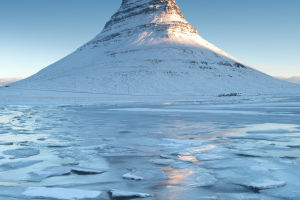Mountaineering is a challenging and exhilarating activity that involves climbing high-altitude mountains. It requires a combination of physical and mental strength, as well as proper gear and training.
Whether you're a beginner or an experienced mountaineer, there are several tips and gear suggestions that can help you make the most of your mountaineering experience.
One of the most important tips for mountaineering is to start with a smaller mountain.
If you're a beginner, it's important to gain experience and confidence before tackling more challenging climbs. Starting with a smaller mountain can help you do just that. It will also allow you to become familiar with the gear and techniques required for mountaineering, such as using an ice axe and crampons.
Another important tip for mountaineering is to train your body. Mountaineering requires a lot of physical strength and endurance, so it's important to train your body before attempting a climb. This includes incorporating strength training, cardio, and endurance exercises into your routine to prepare for the climb.
Acclimatization is another crucial aspect of mountaineering. Acclimatization is the process of adapting to higher altitudes, and it's important to acclimatize properly before attempting a climb to avoid altitude sickness. This involves spending time at higher altitudes to allow your body to adjust to the thinner air.
Staying hydrated is also essential for mountaineering. Dehydration can lead to fatigue, headaches, and other symptoms that can affect your performance. It's important to drink plenty of water and electrolyte drinks to stay hydrated during your climb.
Dressing in layers is also important for mountaineering. Weather conditions can change quickly in the mountains, so it's important to dress in layers. This will allow you to adjust your clothing as needed to stay comfortable. It's also important to bring extra clothing in case the weather changes unexpectedly.
Now let's talk about the gear necessary for mountaineering. A climbing helmet is essential for protecting your head from falls, falling rocks, and other hazards. A climbing harness is also necessary for attaching yourself to ropes and anchors. An ice axe is a multi-purpose tool that can be used for cutting steps, self-arresting, and anchoring.
Crampons are metal spikes that attach to the bottom of your boots, providing traction on ice and snow. Mountaineering boots are designed for climbing in cold and wet conditions. They provide support and warmth while also being waterproof.
A rope is necessary for protecting yourself during a fall and for rappelling down the mountain. Carabiners are used for attaching ropes and other gear to your harness. A headlamp is essential for climbing in the dark or in low-light conditions. A backpack is necessary for carrying all of your gear and supplies.
Navigation tools, such as a map and compass or GPS device, are essential for navigating the mountain.
In addition to the above gear, it's important to bring plenty of food and water, a first-aid kit, and any other necessary gear for the specific climb you're attempting. It's important to research the climb beforehand to determine what gear you'll need and to ensure that you're properly prepared.
Mountaineering is an exciting and challenging activity that requires proper preparation and gear. By following these tips and gear suggestions, you can have a safe and enjoyable climb to the summit.
Remember to always prioritize safety and follow proper mountaineering techniques, and never attempt a climb that is beyond your skill level. With the right preparation and gear, you can make the most of your mountaineering experience and achieve your goals.


